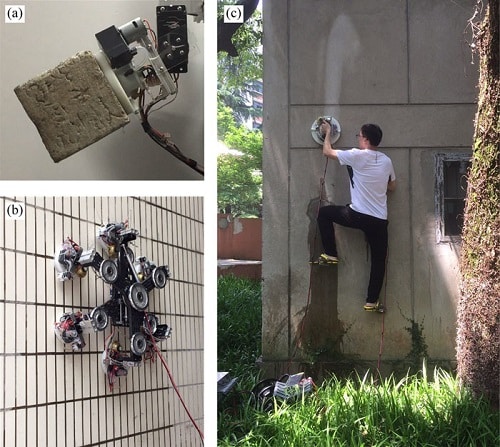By employing a centrifugal force-based zero pressure difference (ZPD) method, researchers have designed a new suction unit that ensures that the vacuum pressure never gets reduced – even on rough surfaces.

Since their inception in 1650, the present-day vacuum pumps have undergone a lot of changes. Notably, the vacuum suction units that are responsible for creating a vacuum layer on a surface have become increasingly stable and capable of creating an immense, differential pressurised force.
However, this development has come with a flaw. Traditional vacuum suction devices work best on plane surfaces. But when it comes to rough surfaces, they often experience vacuum leakage, which causes them to create a weak suction on rough surfaces. In order to prevent this issue, the flow path between the outside atmosphere and the vacuum zone is blocked with the help of a sealing ring. Again, it leads to negligible leakage on a plane surface but fails to do so on an uneven surface.
Now, researchers from Zhejiang University have established a new method that effectively eliminates any vacuum leakage on a rough surface. This method, based on the zero-pressure difference (ZPD) instead uses a high-speed rotating water ring that is present between the uneven surface and the suction cup. Such a design is touted to have applications in the design and development of climbing robots and robotic arms with powerful grasping capabilities.
This vacuum suction unit can also allow humans to climb walls (somewhat like spiderman).
“There are many applications of our design, but we think the wall-climbing robot will be the most useful,” said Xin Li, Professor of Mechanical Engineering at the Zheijang University. “Compared to other wall-climbing robots, the robot with our ZPD-based suction unit achieves surprising improvement in performance.”
Power of centrifugal force
By utilising the power of centrifugal force, vacuum leakages drastically come down. The centrifugal force of the high-speed rotating water ring reduces the pressure difference at the boundary to prevent vacuum leakages. This helps to secure the high vacuum pressure between the surface and suction cup.
The ZPD suction unit is energy-efficient, smaller and lighter than traditional suction units, which weigh several kilograms and consume a lot of power. With a weight of just 0.8 kilograms, the suction unit generates a suction force of over 245 Newtons while consuming power less than 400 Watts.

Planning to reduce water consumption
Going forward, the researchers want to enhance the design further.
“The next step in this research is to cut down water consumption. If the water consumption can be reduced, the suction unit will work for a very long time with little water so that the wall-climbing robot could carry its own water instead of being connected to a supply,” said Li.
Read the research paper here.








